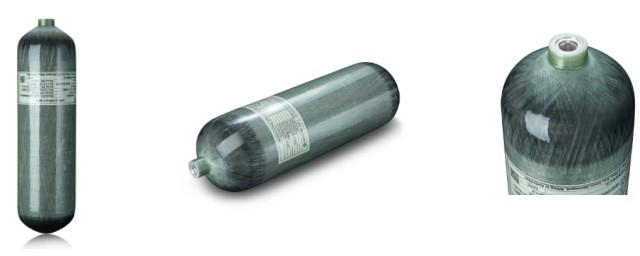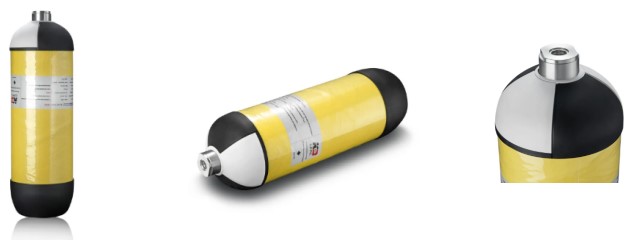High-altitude ballooning (HAB) serves as a gateway to the upper atmosphere, providing a unique platform for scientific exploration, educational projects, and technology testing. This operation involves launching balloons typically filled with helium or hydrogen to altitudes where the Earth’s atmosphere transitions into space, offering invaluable insights into atmospheric science, cosmic radiation, and environmental monitoring. The success of these missions hinges on various factors, from balloon design to payload management, among which the use of carbon fiber cylinders plays a pivotal role.
The Essence of High-Altitude Ballooning
High-altitude balloons can ascend beyond 30 kilometers (about 100,000 feet), reaching the stratosphere, where the thin air and minimal weather disturbances create an ideal environment for conducting experiments and observations. These missions can range from a few hours to several weeks, depending on the objectives and balloon design.
Operational Dynamics
Launching a high-altitude balloon involves meticulous planning and execution. The process begins with designing the payload, which may include scientific instruments, cameras, and communication devices. The balloon’s lift gas, typically helium for its inert properties or hydrogen for its superior lifting capacity, is carefully calculated to ensure the balloon can reach the desired altitude while carrying the payload.
The Role of Carbon Fiber Cylinders
Herein lies the critical application of carbon fiber cylinders: providing a lightweight yet durable solution for storing the lift gas. These cylinders offer several advantages crucial for the success of HAB missions:
1-Weight Efficiency: The paramount advantage of carbon fiber cylinders is their significant weight reduction compared to traditional metal cylinders. This allows for larger payloads or additional instruments, maximizing the scientific return of each mission.
2-Durability: High-altitude conditions are harsh, with significant variations in temperature and pressure. Carbon fiber’s resilience ensures that the cylinders can withstand these conditions without compromising the integrity of the stored gases.
3-Safety: Carbon fiber’s strength-to-weight ratio also contributes to safety. In the event of an unexpected descent, the reduced mass of carbon fiber cylinders poses a lower risk of damage upon impact compared to heavier alternatives.
4-Customization and Capacity: Carbon fiber cylinders can be tailored to various sizes, allowing for precise control over the volume of lift gas. This customization enables accurate altitude targeting and mission duration planning.
Integration in Payloads
Incorporating carbon fiber cylinders into the balloon’s payload requires careful engineering. The cylinders must be securely mounted to ensure stability throughout the flight. Connections to instruments or release mechanisms must be reliable, as the extreme conditions of high altitudes leave little margin for error.
Applications in Scientific Research
The use of carbon fiber cylinders in high-altitude ballooning has expanded the possibilities for scientific research. From studying ozone depletion and greenhouse gases to capturing high-resolution images of celestial objects, the data collected at these altitudes offer insights that ground-based studies cannot.
Educational and Amateur Projects
Beyond research, high-altitude ballooning with carbon fiber cylinders has become accessible to educational institutions and amateur scientists. These projects inspire future generations of scientists and engineers by providing hands-on experience with real-world scientific exploration.
In high-altitude ballooning, helium or hydrogen gas is typically injected into carbon fiber cylinders due to their lifting capabilities. Helium is preferred for its non-flammable nature, providing a safer option, though it is more expensive. Hydrogen offers a higher lifting capacity and is less costly but comes with a higher risk due to its flammability.
The volume of the cylinder used can vary based on the specific requirements of the balloon launch, including the desired altitude, the weight of the payload, and the duration of the flight. However, a common volume for these cylinders in high-altitude ballooning projects tends to be in the range of 2 to 6 liters for smaller, educational or amateur payloads, and larger volumes, such as 10 to 40 liters or more, for professional and research-focused missions. The exact choice depends on the mission’s objectives and the total system design to ensure optimal performance and safety.
Looking Forward
The advancement of materials like carbon fiber and the ongoing innovation in balloon technology continue to push the boundaries of what’s possible with high-altitude ballooning. As we seek to understand more about our planet and the universe beyond, the role of carbon fiber cylinders in these endeavors remains indispensable.
In conclusion, the application of carbon fiber cylinders in high-altitude ballooning represents a convergence of material science and exploratory spirit. By enabling lighter, safer, and more reliable missions, these cylinders are not just components of a payload but are pivotal to unlocking new horizons in atmospheric research and beyond.
Post time: Mar-20-2024


